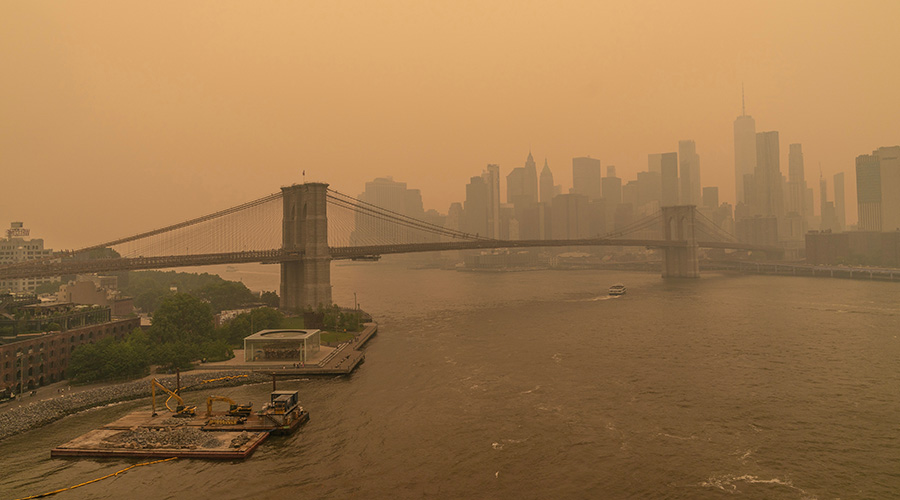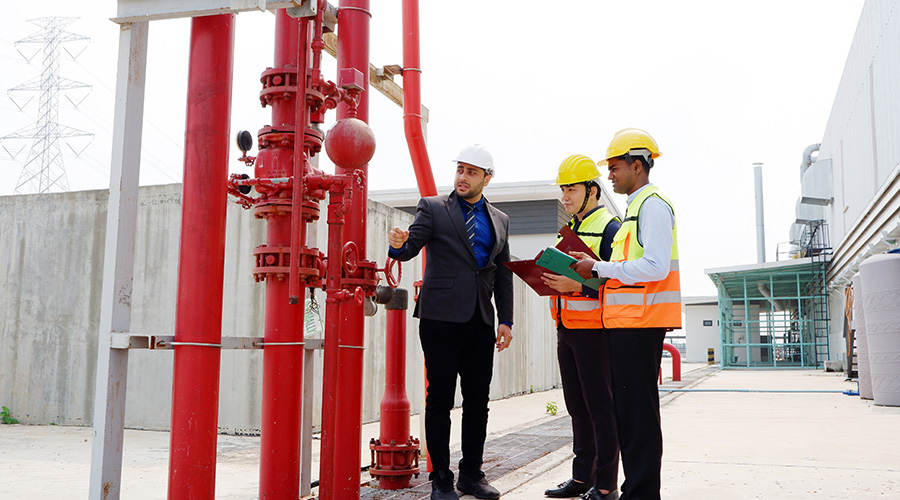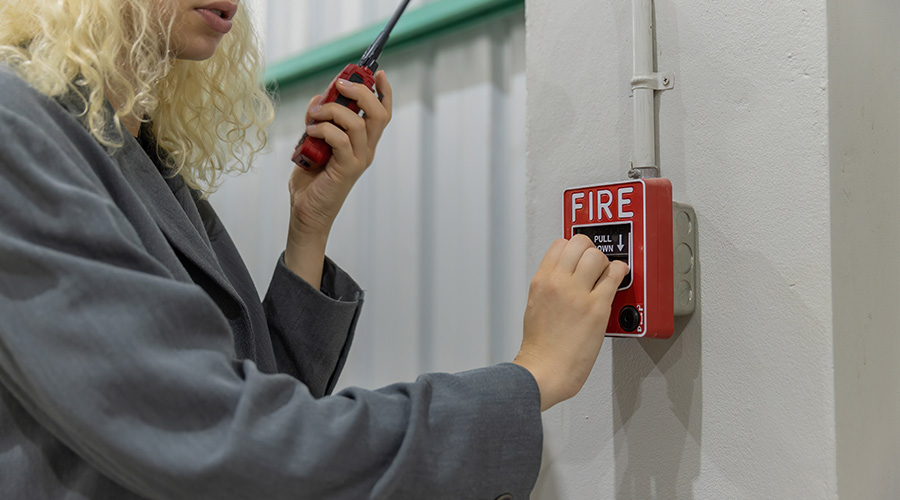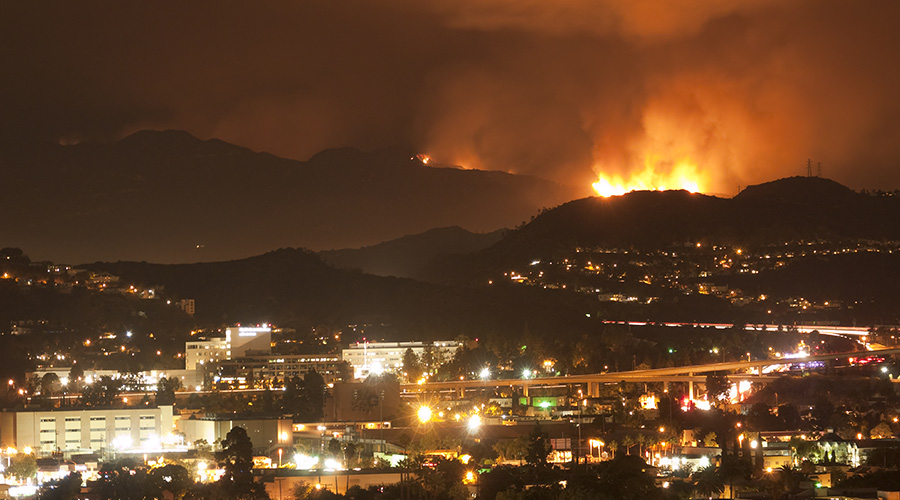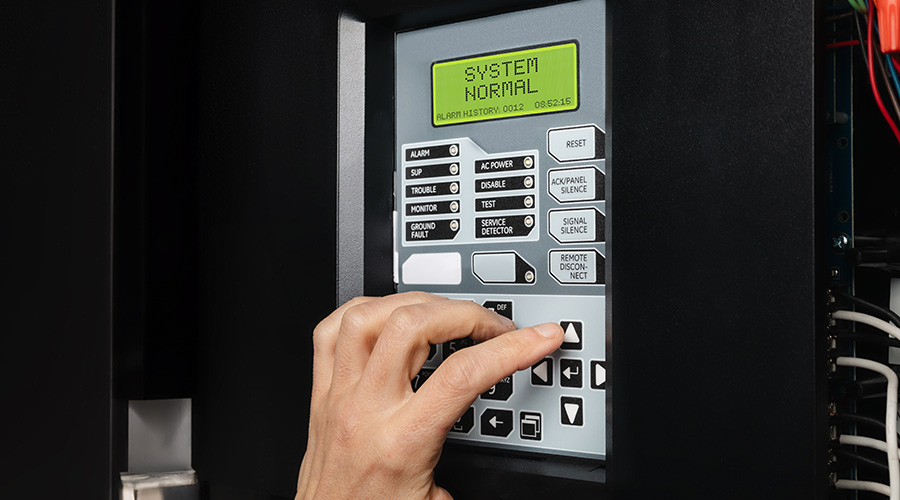How Building Resiliency is Changing with a Changing World
With wildfires and other extreme weather events on the rise, buildings, and their materials, must adapt
It will be news to few that last year was a record wildfire season in Canada, with more than 45 million acres burned – nearly doubling the previous record from 1989.
Cities across the United States from Bismarck, North Dakota, to Minneapolis to Detroit were so covered in red haze, they looked like science fiction depictions of Mars. New Yorkers could barely see the Brooklyn Bridge. On one day in late June, NASA even shared satellite imagery of a long, eerie tentacle of smoke reaching from wildfires in Quebec across the North Atlantic to Portugal and Spain.
And, of course, this came just a few years after the record-setting 2020 U.S. wildfire season in which severe thunderstorms ignited fires across the American west, burning more than 10 million acres and causing nearly $20 million in property damage.
What’s more, the National Oceanic and Atmospheric Administration reported in January that 2023 was Earth’s hottest year ever. In February, locales across North America were reporting record temperatures for mid-winter. Experts are already warning about what could be an even worse fire season, citing a combination of climate change and El Niño that will produce the dry and hot conditions that exacerbate wildfires.
“We’re experiencing more and more extreme events,” says Birgitte Messerschmidt, director of research for the National Fire Protection Agency. “Our built environment is being stressed by extreme events, whether it’s wildfires, hurricanes or floods. There’s almost not a week that goes by without seeing in the news that somewhere in this country has been hit by an extreme event. And I see that there’s more understanding that we have to make sure that our built environments can withstand these events.”
What exactly is building resiliency anyway?
Building resiliency is having a moment.
“It became a lot more visible to people that this is an issue, especially in the last couple years when we’ve had some of these external events become so extreme,” says Dr. Marilyn Black, vice president and senior technical and strategic advisor for the Chemical Research Institute, and founder of the GREENGUARD Environmental Institute and Air Quality Sciences, Inc. “We’re experiencing the wildfires, we’re experiencing some of these periods of extreme heat and in a lot of parts of the country where buildings are not equipped to handle these situations. So that kind of brought it forward pretty quickly.”
In fact, in late 2023, after the conclusion of Canada’s record fire season, Black even formed a working group with the U.S. Green Building Council (USGBC) to talk about the issue and formulate approaches to address it.
But the concept of building resiliency isn’t exactly new. As long as there have been buildings there have been people working to ensure those buildings keep standing.
What has perhaps changed in the ensuing millennia is the definition and the concerns.
“The design and construction industry around 2016 actually established a definition of resiliency for buildings, and that definition addressed how you prepare, plan and recover from adverse events. But it did not address health,” Black says. “So we’ve been in the process of working with the USGBC to make sure that we look at resiliency from more of a holistic manner and ensure that human health and wellbeing is part of that resiliency definition.
“If we were to define resiliency today, we’d say something like it’s the ability to prepare, plan, absorb and recover from adverse events to safeguard human health and wellbeing from internal and external stressors.”
Black says this new definition isn’t exactly mainstream, but it is definitely gaining momentum, with key stakeholders – the building and design industry, the building operations industry, and state and federal governments – all coming along.
And adverse events aren’t only extreme events, like natural disasters. Much of Messerschmidt’s work with the NFPA is focused on what she calls “chronic events.” Wildfires, after all, aren’t the only type of blaze. Fires can start with anything from faulty wiring to careless users of a microwave or space heater.
IAQ concerns
If safeguarding human wellbeing is the name of the game, then one of a building executive’s major concerns should be air quality, Black says.
“Wildfires are unique. They present a challenge, because they create this very toxic smoke that can move thousands of miles away from their original event,” she says.
Therefore, whenever possible, she recommends builders consider materials that won’t turn into toxic fumes if and when they do eventually burn.
But smoke from record-setting wildfires aside, Black says the air quality in our built environments is 2-5 times worse than that of the outdoors.
“Buildings are designed and constructed to operate at kind of standard conditions, which are more like 75 degrees Fahrenheit and 50 percent relative humidity,” she says. “All of our building materials and systems are designed to be optimum at those conditions. But what we’re finding with buildings is now with the extended, chronic heat situations we have, buildings are getting hotter.”
According to Black, it only takes an increase of a few degrees for toxic emissions to start leaching off of building materials such as flooring and ceiling tiles and into the air. She has recently worked with school districts where extreme heat has resulted in reduced air quality and increased issues for asthmatic students.
Black and her team are pushing building materials manufacturers to take a closer look at their formulations to ensure the safety of building occupants as global temperatures continue to rise.
However, that process will take time, and meanwhile the U.S. has a new build rate of just 2 percent, according to Messerschmidt.
Therefore, building executives will need solutions that can be retrofitted to existing buildings, which is why Black recommends building executives research ways to improve their buildings’ indoor air quality through ventilation and air purification systems.
Related Topics:








